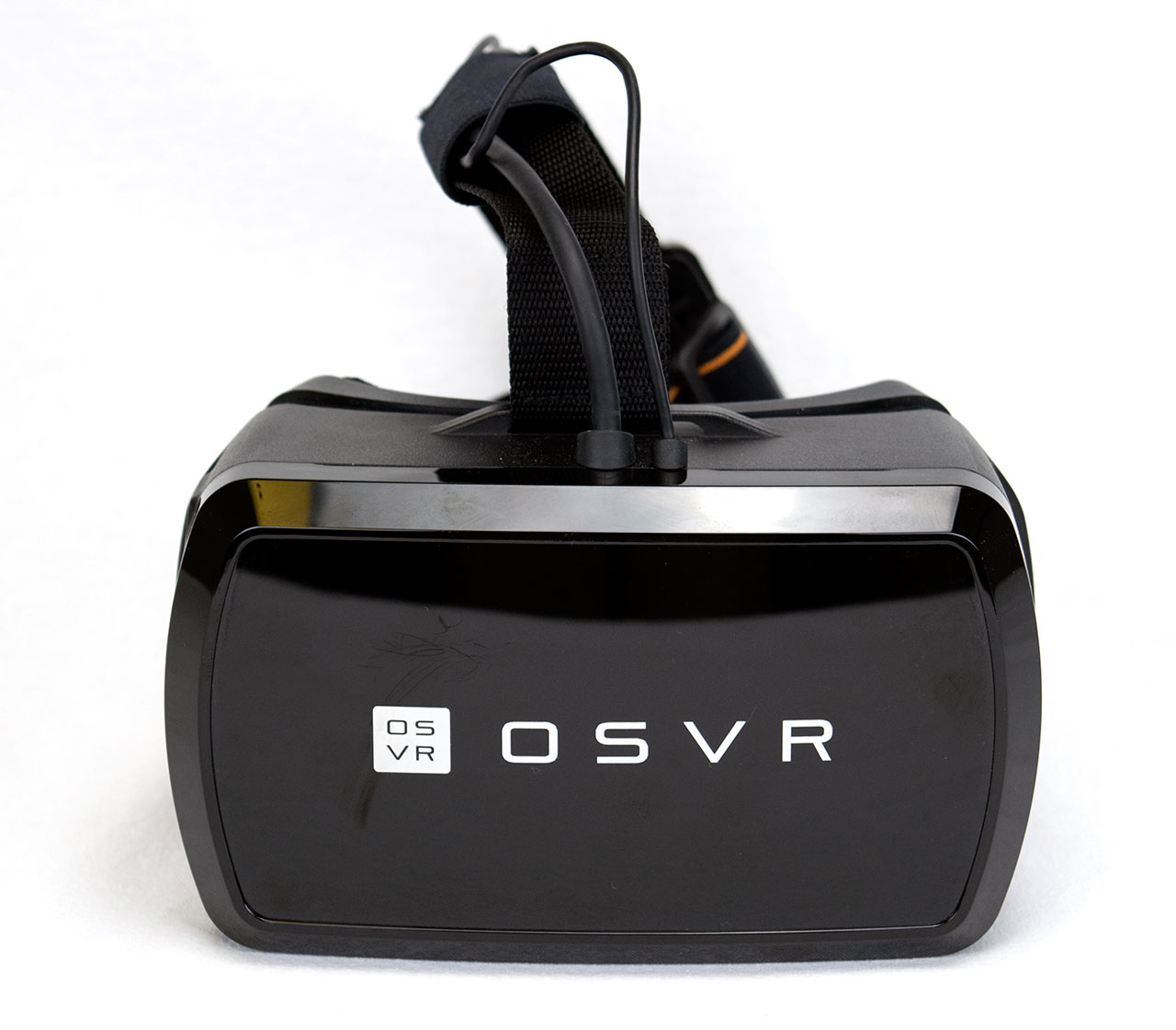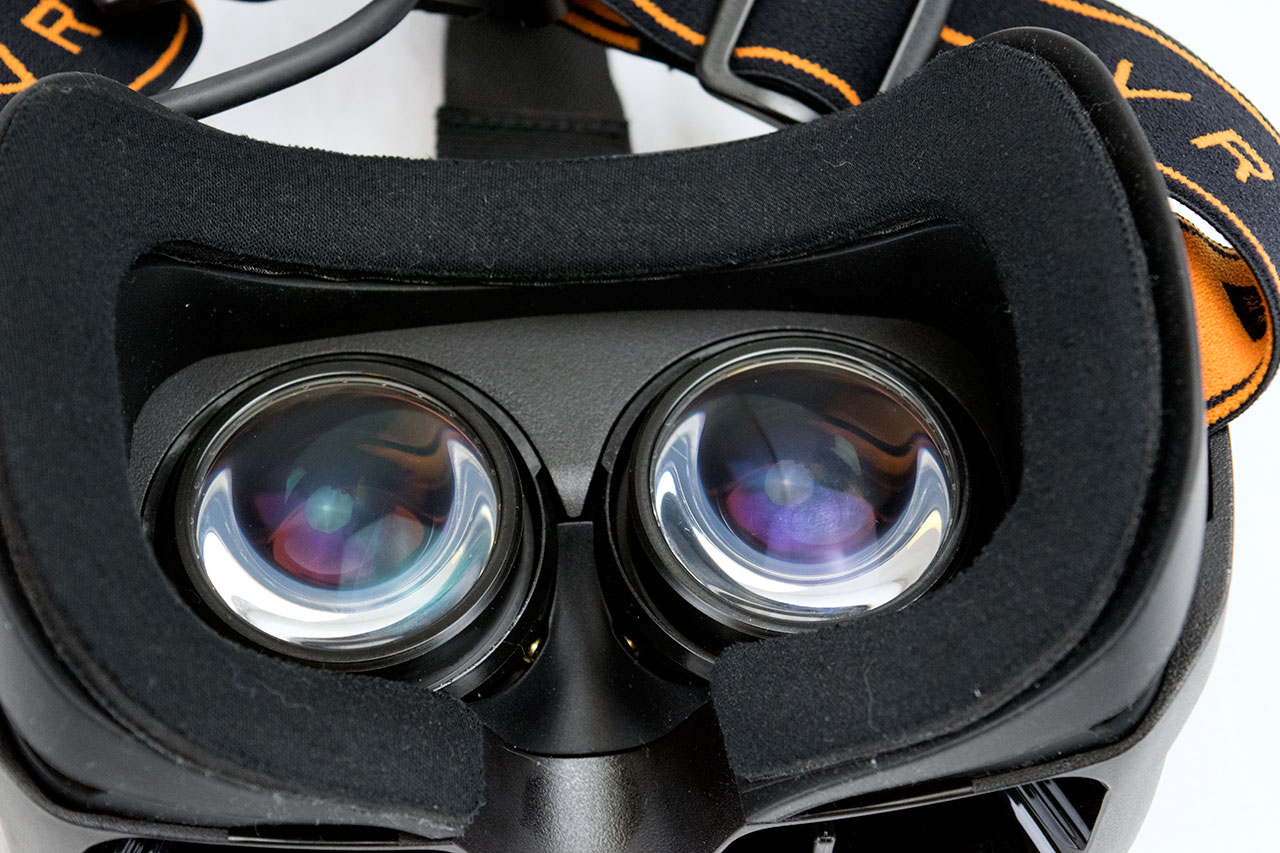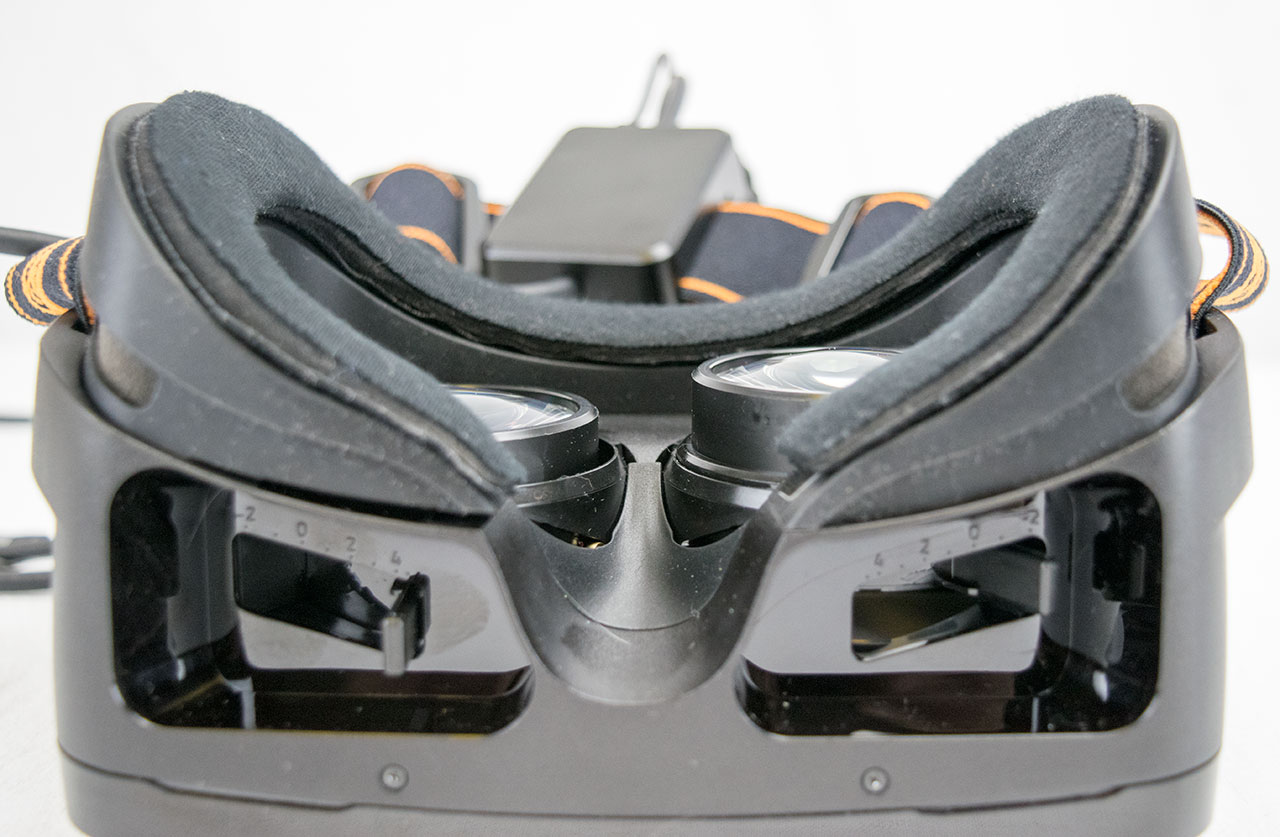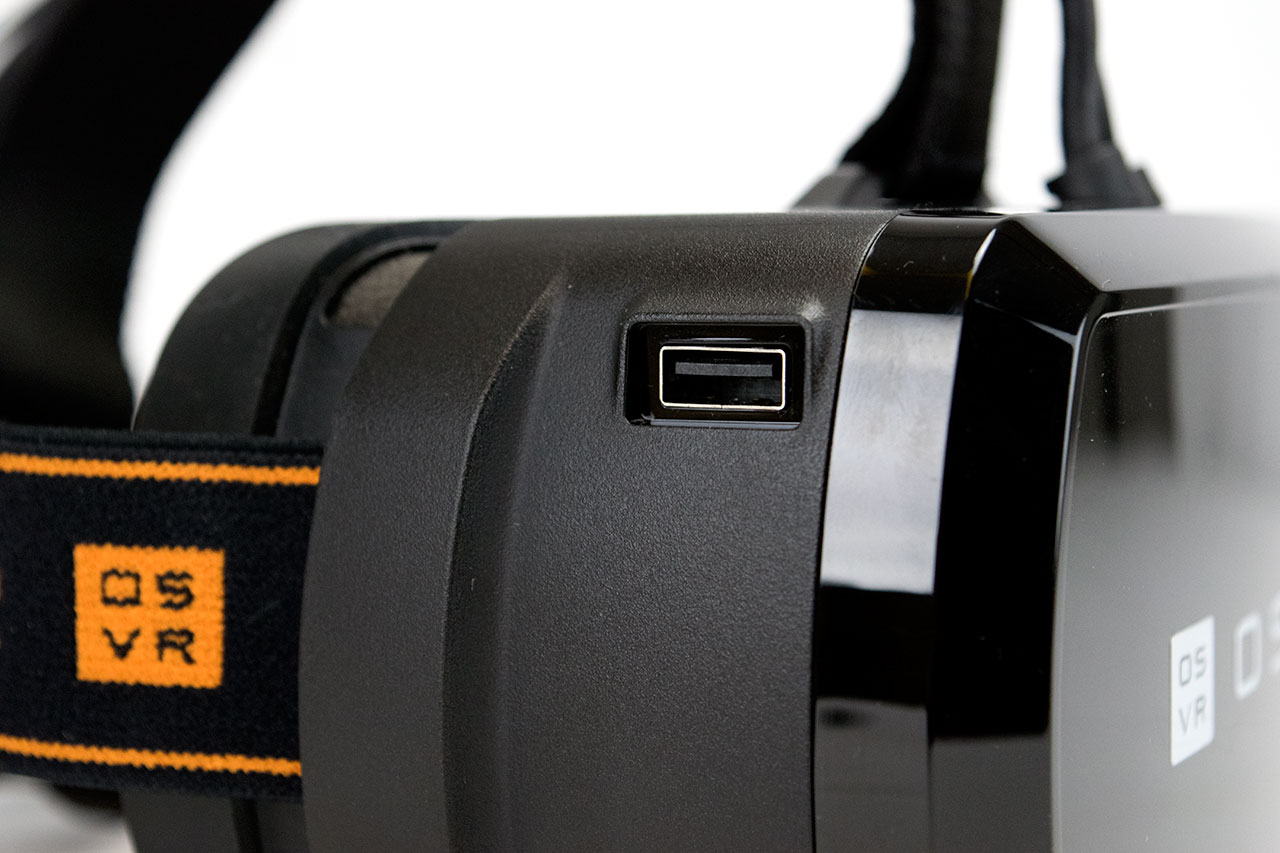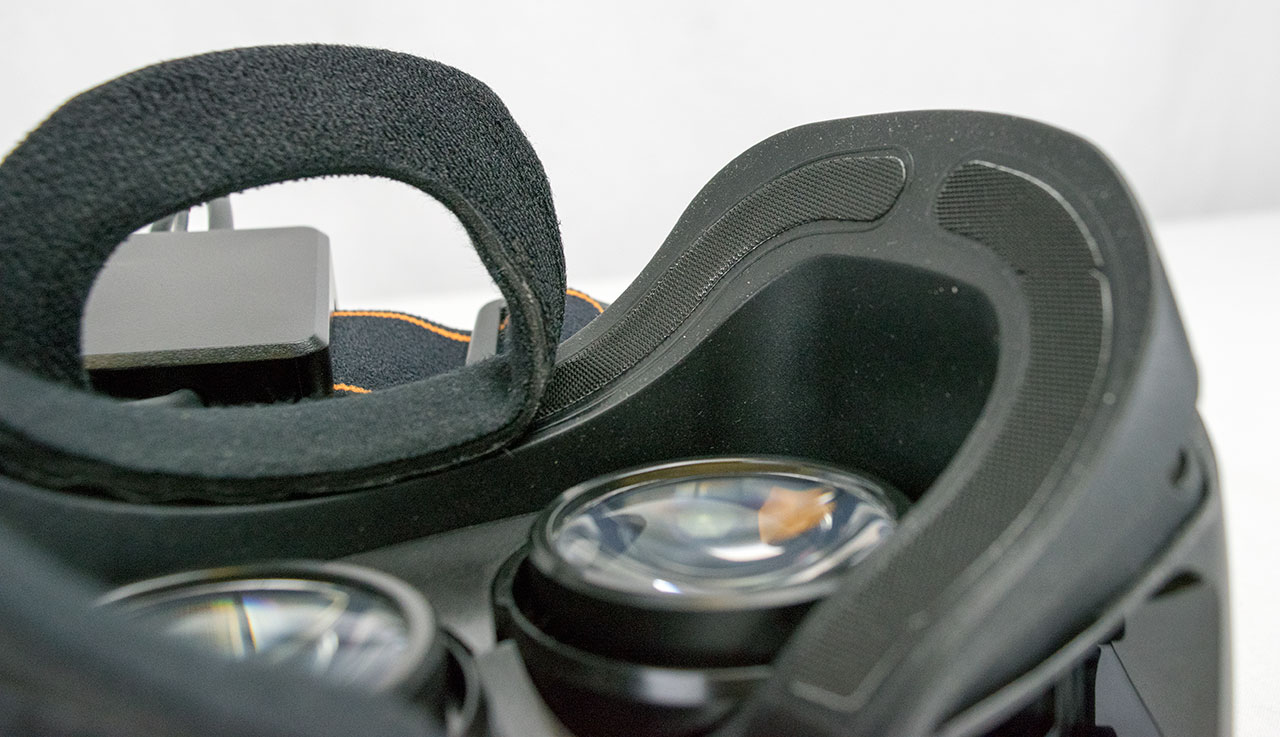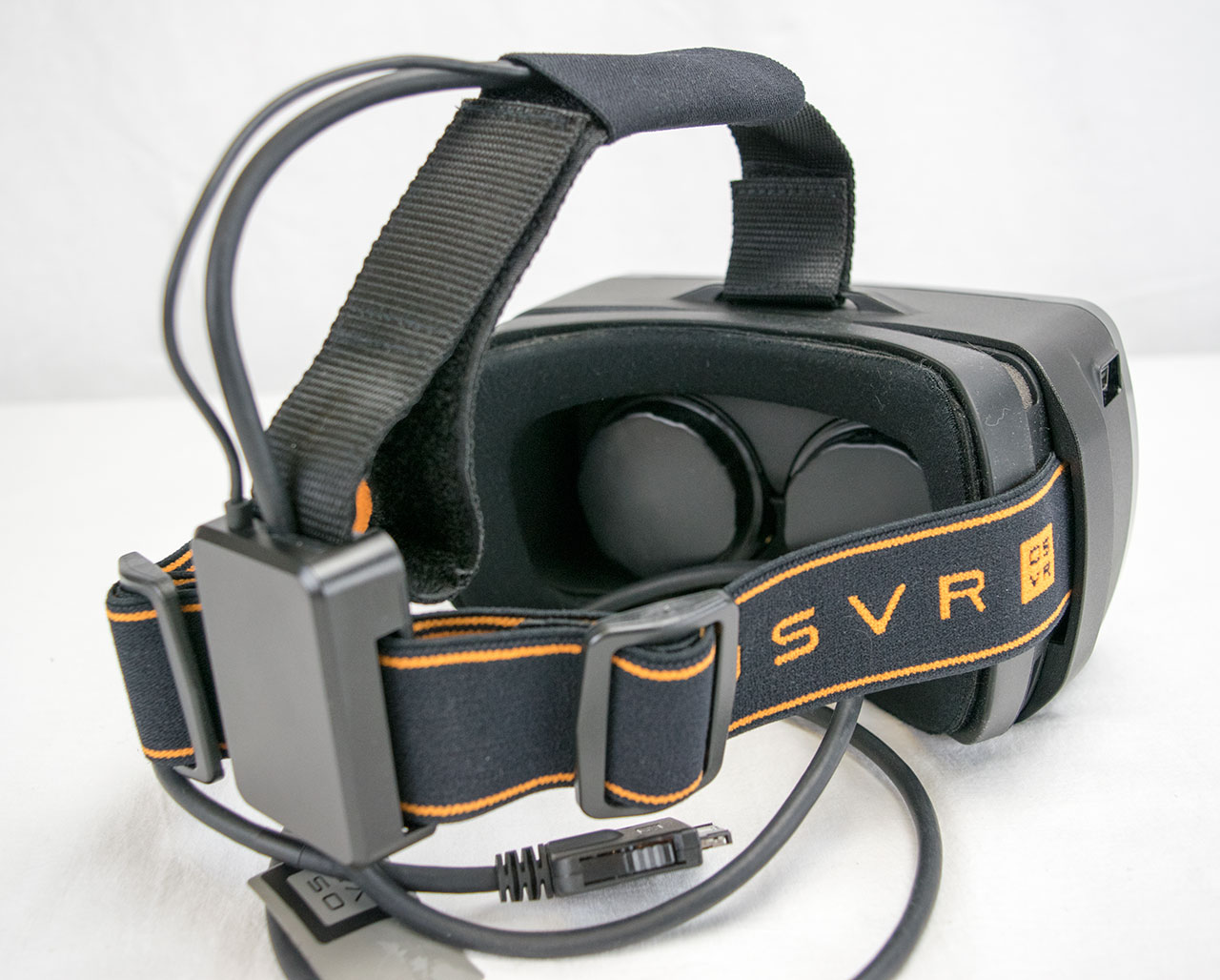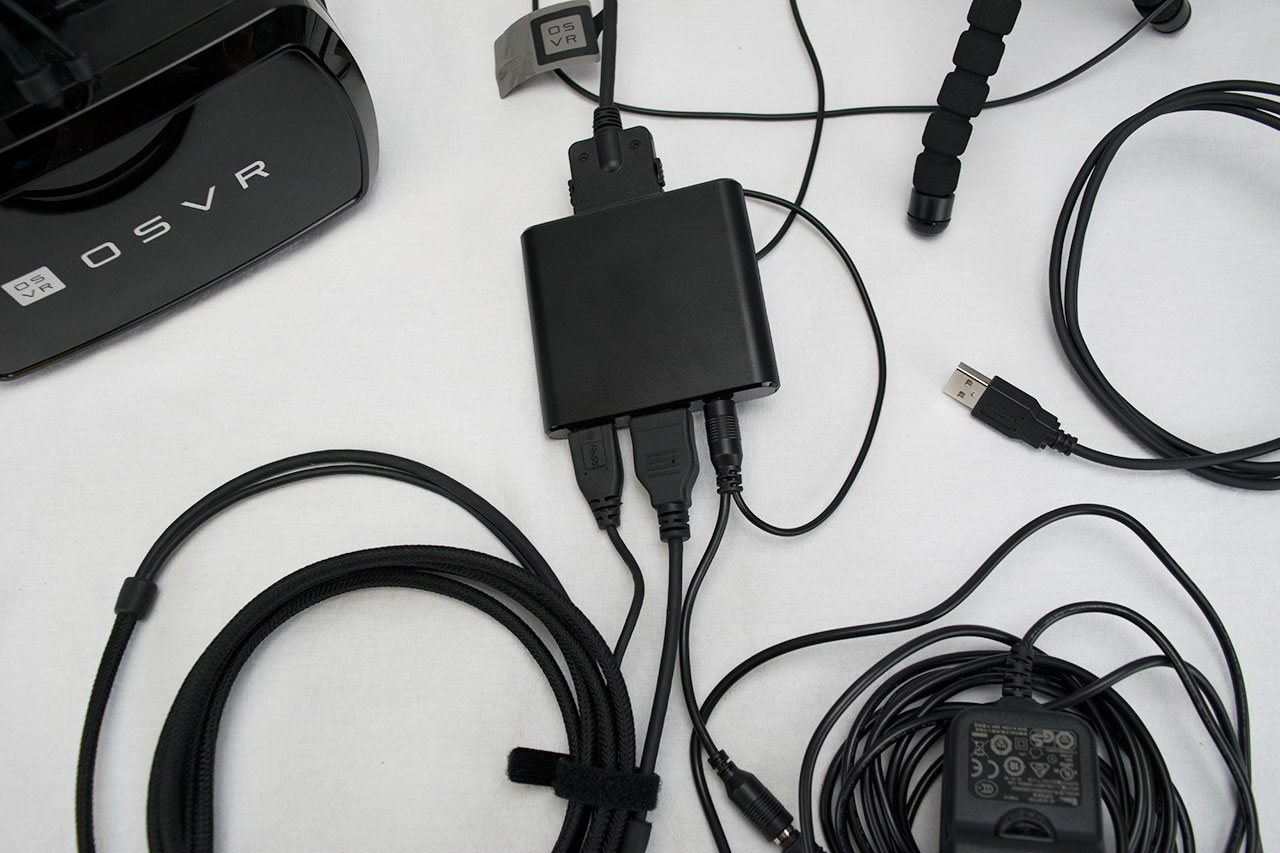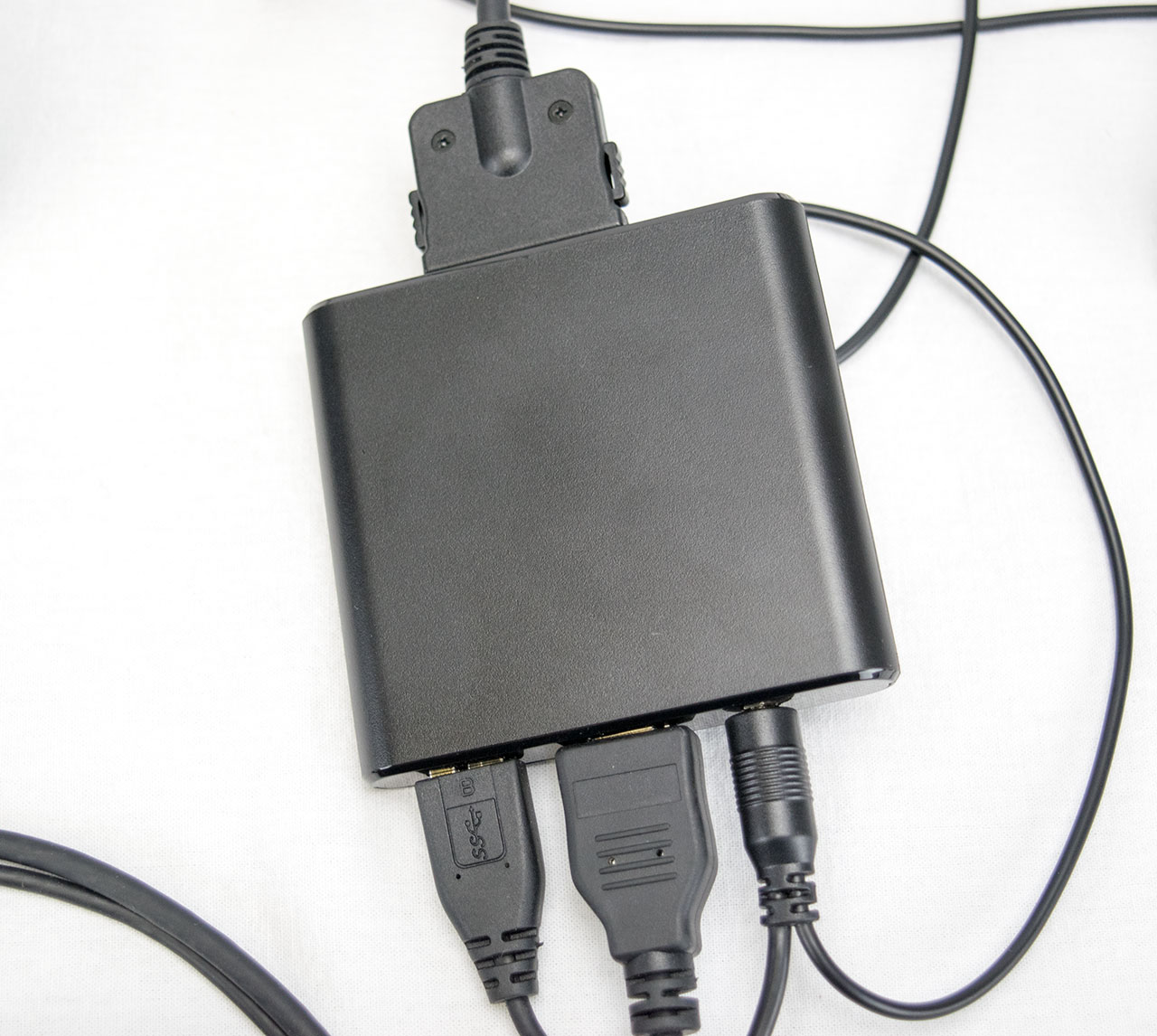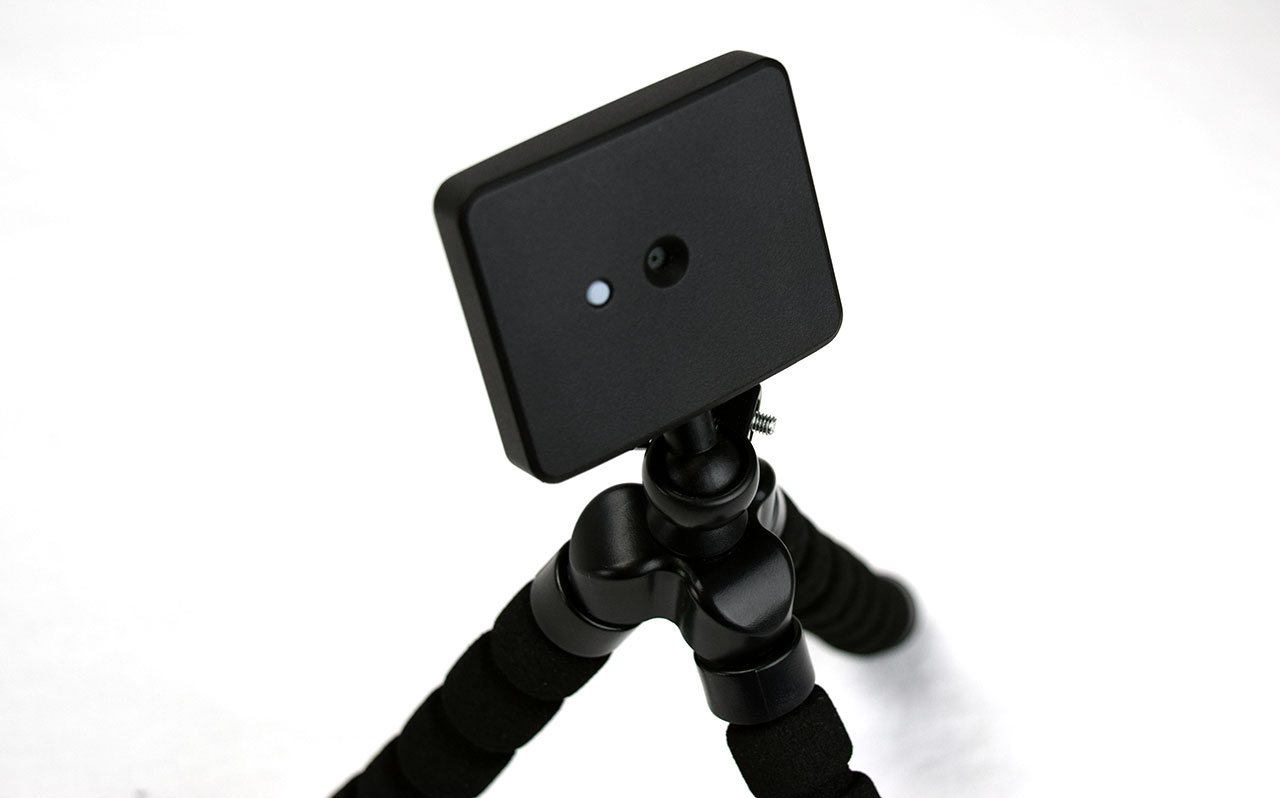Razer OSVR Hacker Developer Kit 1.4 Review
The Razer OSVR HDK 1.4 offers VR on a budget. The HMD features a lower resolution than the typical VR systems, which lowers the GPU requirements for VR gaming, but can a 60Hz 1080p display really deliver a compelling VR experience?
Why you can trust Tom's Hardware
Product 360
The OSVR HMD is a lower-cost, open-source, upgradable head-mounted display that offers an alternative to Oculus' closed platform and the expensive high-end system that Valve and HTC built.
The OSVR HMD is rather small compared to the Vive and Rift. The headset is only seven inches across at its widest point. The faceplate is 3.75 inches tall, but the cables come out of the top, adding to the total height. The HMD is also fairly shallow at four inches deep.
It may be small, but the OSVR HMD is rather heavy for its size. We found the Oculus Rift to be 470g, while the Vive weighs 563g. Meanwhile, the OSVR kit tips our scale at 650g, despite its size advantage.
Its front is made of glossy black plastic with the OSVR logo across the front. Infrared lights used for tracking are located behind the reflective faceplate. And inside, the OSVR HMD employs a 5.5-inch 1920x1080 low-persistence OLED display at 60Hz. That refresh rate is sub-optimal, but it operates at a simulated 240Hz, which OSVR says helps keep persistence of vision down on the screen.
The OSVR HDK 1.4 is designed to accommodate customization that enables additional functions. Removing the faceplate is a matter of simply loosening two screws on the bottom of the headset. OSVR has plans to release an upgraded faceplate that features a Leap Motion camera built in. And while there are currently no alternatives for the screen, the potential is there to swap in your own display. This capability isn't really meant for enthusiasts, but rather hardware developers who wish to iterate on their OSVR designs.
Oculus' Rift and HTC's Vive both use variations of Fresnel lenses to minimize weight. Fresnel lenses are typically much shallower, thus requiring less glass than typical lens designs. OSVR doesn’t follow suit, though. The kit uses a pair of lenses that are convex and bevel out towards your eyes instead (they are similar to fisheye lenses in appearance). We surmise that the lenses make up a large portion of the HMD's extra weight.
The OSVR HDK doesn’t offer any kind of IPD adjustment, but does include independent lens depth adjustments. On the bottom of the headset, you’ll find a knob that lets you dial in each lens' perfect location. But I found that I wasn’t able to adjust them very far before they both crashed into the bridge of my nose. People's faces come in a wide variety of shapes and sizes, so my case won't be universal. Still, it's clear that the lenses should be deeper into the HMD for many people.
Get Tom's Hardware's best news and in-depth reviews, straight to your inbox.
The OSVR HMD's body is made of hard plastic with a matte black finish. Its top includes a loop for the headband and enough space to feed the data cables through. The right side of the headset includes a USB 3.0 port that can be used to power accessories.
The face cushion on the OSVR HMD is made of a pliable rubber material that allows the headset to conform to your face's shape. OSVR lines its face gasket with a removable foam liner, which is held on by Velcro similar to HTC's Vive. The foam that OSVR includes is very thin—only a few millimeters. There's not enough cushion to hold the HMD's substantial weight comfortably. I found myself longing for the Vive's thick foam. More cushion might have solved the issue of the lenses touching my nose, too.
The headset's weight is part of OSVR's problem. However, its head strap could also be improved upon. Think of the strap's soft, stretchy material as similar to what you might see on a pair of ski goggles. The top is made of thick nylon with Velcro over most of it. Oculus and HTC designed their straps to come down low on the back of your head, helping balance the HMDs during long gaming sessions. The OSVR HMD strap doesn't do this; it simply wraps around your head, distributing weight less evenly.
OSVR's data cable exits the top of the headset and passes over the upper strap. It runs through a small box holding the strap's three points together. As a result, the cable is naturally directed straight down from the headset. This cable is approximately three feet long and features a proprietary plug that connects to the belt box module.
Belt Box Module
All of today's VR platforms have their own way of dealing with the fact that you're tethered to your computer. Oculus streamlined its system down to one proprietary cable in time for retail availability, but the DK2 required far more cable management. OSVR's HDK 1.4 is still very much a developer kit, and the cable configuration shows as much with an arrangement similar to Oculus' Rift DK2. At least this headset manages to keep cables coming from it to a minimum. Beyond the belt box, connectivity gets much more confusing.
The HMD plugs into one side of the belt box. That cable is flanked by a microphone/headphone jack and an auxiliary USB 3.0 port. The other side of the belt box features HDMI, a USB 3.0 port, and the power jack. As its name suggests, the belt box is meant to clip to your belt or pants as you wear the headset. HTC's approach is similar, though it puts the link box on your desk instead of on your hip.
A wearable belt box helps relieve tugging pressure on the back of your head from hanging cables, though you're left dealing with half a dozen cables dangling from your side. This approach works, but it's still not what we'd call polished.
IR Positional Tracking Kit
The OSVR HDK 1.4 comes bundled with IR tracking to monitor your head's position in space. This feature is complemented by sensors inside the HMD to track the direction you're facing. The front panel features an array of infrared lights seen by the OSVR IR camera (if you remember, Oculus included a similar device with its Rift DK2). The camera that comes with the HDK 1.4 features a tiny lens, which we found to be somewhat of an issue. The headset has to be facing the camera for head tracking to work; it only has IR emitters inside the faceplate. There's nothing on the sides or rear. This limits the range you can rotate your head.
When the camera can no longer see the OSVR HDK clearly, your position inside VR starts moving around. Sometimes it drifts to one side, and sometimes it skips around a little bit. Tracking issues can lead to motion sickness if you haven't yet developed your "VR legs." We didn't have that specific problem, but the experience sure suffered for it.
Tracking issues seem to be intermittent, though. Sometimes the platform worked flawlessly, and other times (in the same game) we'd be all over the place. It's definitely important for the camera to have an unobstructed view of the headset, and its likely a good idea to avoid USB hubs. We noticed that our tracking woes were greatly reduced when the camera was plugged directly into our motherboard instead of the USB port on the side of our monitor.
Current page: Product 360
Prev Page Introduction Next Page What Can (And Can’t) You Do With The OSVR HMDKevin Carbotte is a contributing writer for Tom's Hardware who primarily covers VR and AR hardware. He has been writing for us for more than four years.
-
Jeff Fx > can a 60Hz 1080p display really deliver a compelling VR experience?Reply
If you can get games to work with it, maybe, if you haven't experienced modern VR and aren't susceptible to VR sickness.
I had an eMagin 800x600 per eye VR system a decade ago, and it was pretty good for people who don't get VR sick, until Nvidia dropped support and it became useless.
I'd recommend saving up for a Vive, the only full-VR system available today. Buying a low-quality alternative to something nice rarely turns out well. you'll just wind up junking it and spending the money on what you really wanted later. -
John Nemesh The only thing worse than having buyers remorse after buying an $800 VR setup like the Vive is having buyers remorse after doing the "responsible" thing and finding out that it isn't what you really want...then flushing that "savings" down the toilet when you go and buy what you should have bought in the first place...Reply -
John Nemesh Wish I could edit posts...just for the record, I have ZERO buyers remorse with the Vive!Reply -
alidan Personally, all i want of vr is 3d, and track my head, that's it, no room scale no controllers, just simple sensors because what i want is a sit down experience with my head acting as a camera input, especially for racing games.Reply -
picture_perfect Sounds like a "me too" effort by Razer. I don't see much point in any more VR systems right now because the technology cap has already been hit by Oculus/Valve. Until computer performance increases we probably won't see much better. Well we might, but this isn't it.Reply -
caustin582 I'm a Vive owner and while I have been pretty happy with my purchase, if there's one thing I could change it would be for it to have a higher resolution. Even at 1080x1200 per eye the individual pixels are easily visible and the image looks nowhere near as sharp as when I'm gaming on my old 1080p monitor. When the screen takes up such a wide field of view, the resolution needs to go way up in order to compensate.Reply
So it's kind of crazy to me that some companies think they can put out a good HMD that only splits a 1080p screen across both eyes. It might be worth it as a super-budget option for $99, but at $300 it's not all that cheap. Like it's not something most people are just going to buy on a whim and then happy forget about after they realize it looks ugly and makes them sick. Hate to be a downer but this really seems like the worst of both worlds. If you want a quick, cheap VR experience, you can build or buy a Google Cardboard. If you want the real thing, save up a little while longer and get an Oculus or Vive (or just wait until those are $300). -
bit_user Thanks for the review, but just skimming the first page, I'm surprised not to see any mention of the HDK2.Reply -
bit_user Reply
You can in the forums. Just follow the link at the top of the comments.18272515 said:Wish I could edit posts...
Um, it was more of a "me first" effort, with the initial version beating them to market by about a year. I think the author dropped the ball on explaining HDKs origin and backstory. Although it's touched upon, in the last page, I think the rest of the review would've been better served by covering it in a little more depth, right up front. Otherwise, it's not clear why the product compares so poorly with Vive and Rift. It was made to compete with Oculus DK/DK2-era hardware. And the whole review should've been prefaced with the caveat that they're basically reviewing an obsolete product (see above point about HDK2).18272741 said:Sounds like a "me too" effort by Razer. I don't see much point in any more VR systems right now because the technology cap has already been hit by Oculus/Valve.
I'm also puzzled as to why you feel there's only room for 2 players, in this young and dynamic market. Would you say that about any other aspect of computer hardware? (true that, defacto, we have 2 players in CPUs and discrete GPUs, but that's more an issue of cost to enter those markets vs. upside potential).
I'm really glad to see a low-cost solution in between phones and the premium PC HMDs. Maybe 1.4 isn't yet a compelling value offering, but I think there's definitely room for other players and other segments in this market than Vive/Rift. -
kamhagh Doesn't look good :S even my 2k note 4 looks ridicules, I know you can't compare them ut you can compare the pixels :S my view is filled with dotsReply
BTW: why are all vr games stupid space games? :|
